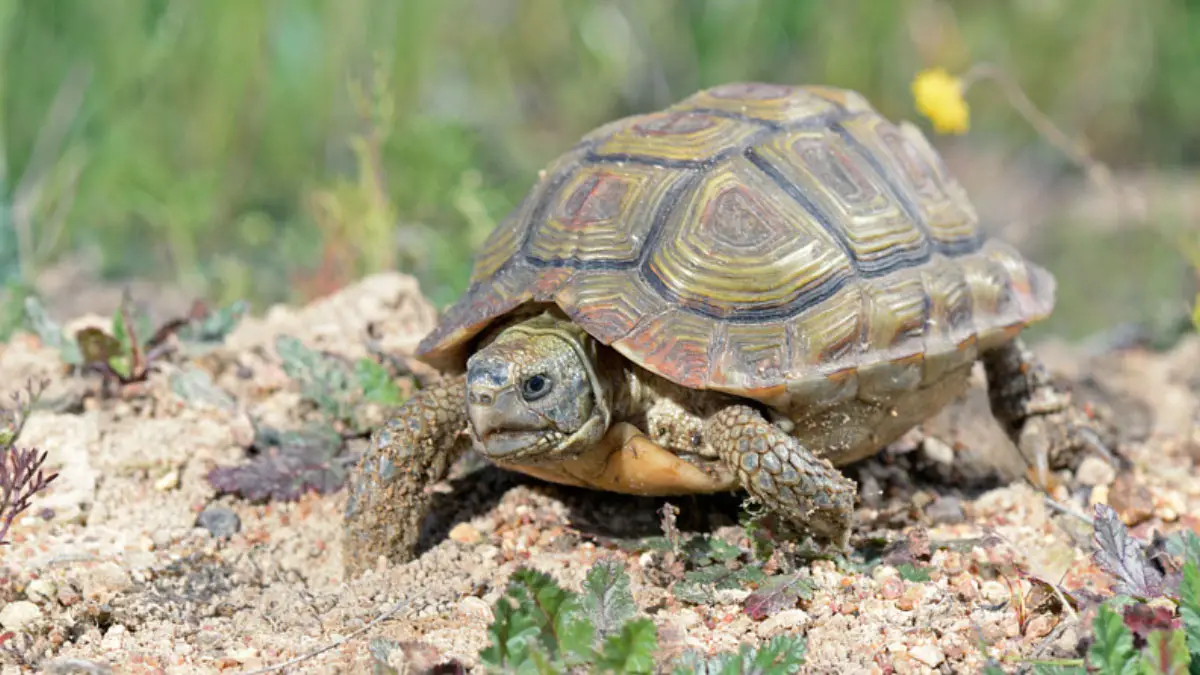How To Trim A Tortoise Beak Like a Pro? Tips and Techniques
It might be interesting to you to know that a tortoise’s beak pretty much grows throughout its life. In that regard, you will need to give your pet tortoise a trim to prevent overgrowth and injury and maintain proper eating habits.
But how to trim a tortoise beak? You can clip at the beak using a nail clipper or wear it down by grinding with a rotary tool. Either method requires patience, precision, and caution. Nevertheless, you can seek vet trimming services if you’re not comfortable with the beak trimming process.
We’ll go over each method in detail and how you can wear the beak down naturally after trimming. Also, we’ll highlight the causes of beak overgrowth and the right time to trim your tortoise beak.
How To Trim A Tortoise Beak?
Contents
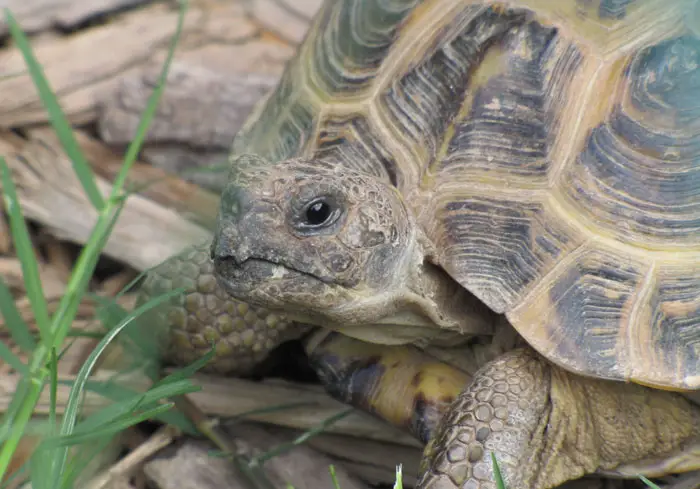
This table highlights the methods for trimming an overgrown tortoise beak.
| Method | Supplies |
| Manual clipping | Nail clippers and pencil marker |
| Grinding | Dremel tool and pencil marker |
Either method requires restraining your tortoise. Primarily, you want to keep the legs out of the way while getting a good grip on the back of the head. It is to keep the tortoise from retracting into the shell.
Also, beak trimming can be an unnerving experience for your tortoise, often leading to defecation. So, a towel will come in handy to protect you from the mess.
Method 1: Manual Trimming with Nail Clippers
In this method, you get to trim small amounts of your tortoise’s beak at a time. Unknown to many, the beak, too, has blood and nerves. That said, cutting too deep may cause severe pain or bleeding.
However, follow the steps below for a successful trimming of your tortoise’s beak.
- Step 1: Use the pencil to mark how far you want to trim. Essentially, you want to draw your line at the point where the top and bottom beak meets.
- Step 2: Clip away at the beak bit by bit until you reach the mark. A good recommendation would be to start at the sides of the beak, as they’re a little softer. Finish off with the tougher front.
- Step 3: Use the file part of the nail clipper to file the edges smoothly.
The following video will help you to complete the manual trimming process of your tortoise’s beak.
Method 2: Grinding with Dremel Rotary Tool
This method wears down the tortoise’s beak by grinding at the overgrown beak. One of the best tools for this job is the Dremel 7350-PET Cordless Rotary Tool Kit.
You’ll utilize the same steps as in the manual clipping process. But instead of the clipper, you use the grinding tool to file down the beak to the point where the top beak and bottom beak meet. Again, you should do it bit by bit to prevent the beak from overheating due to friction.
Watch the following video to learn more about how to use the Dremel tool.
How To Trim A Tortoise Beak Naturally? – Beak Maintenance After Trimming
Like fingernails, your tortoise’s beak never ceases to grow. Depending on the tortoise species, you may need trimming once or twice per year. Nevertheless, you can go for longer without trimming if you know how to wear down a tortoise’s beak naturally.
You can wear down or trim your tortoise beak naturally by offering hard substrates for chewing. Unlike in captivity, the beak naturally wears down in the wild as the tortoise forages for food or digs through abrasive materials like soil and sand.
You can replicate the same in captivity by providing cuttlefish bone. Nibbling on the cuttlebone wears down the beak naturally to the correct length. Plus, it’s a good source of calcium, which helps maintain a healthy beak.
Where possible, you should also make your tortoise work for its food. Don’t chop up everything. Instead, allow your tortoise to occasionally forage for its food.
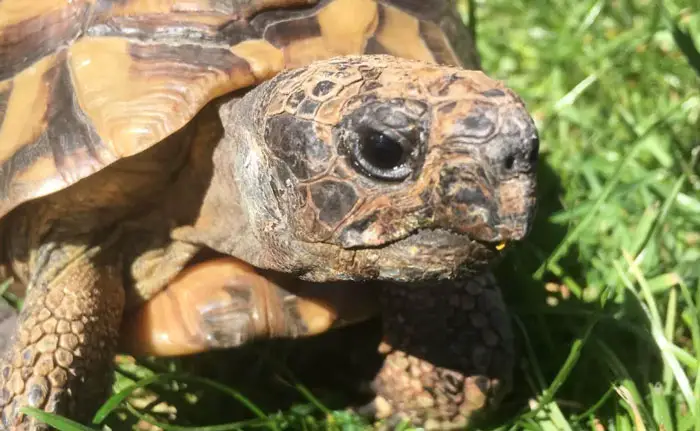
Knowing When To Trim: What Should A Healthy Tortoise Beak Look Like?
When is the right time for beak trimming? The best way around this is to perform a close examination and compare it to a healthy tortoise beak.
- Physical examination: A healthy beak is short with a slight curve at the end. Essentially, it should be short enough that the chin is visible. Plus, it shouldn’t have any visible cracks.
- Changes in eating behavior: Struggling to grab or chew its food may indicate an overgrown beak. This is often accompanied by difficulty in opening and closing the mouth properly.
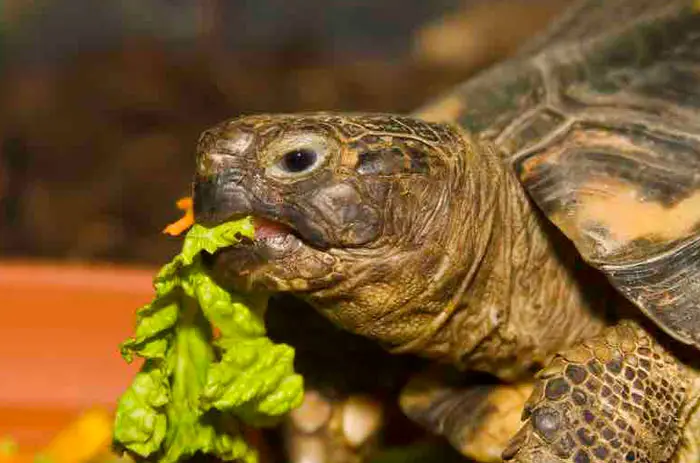
Characteristics of A Healthy Tortoise Beak
- Smooth and even surface with no cracks or chips
- Proper alignment and overbite
- The beak should continue to grow at a consistent rate
Causes of Overgrown Beaks in Tortoises
All tortoise species, including the Sulcata tortoise (African spurred tortoise), Leopard tortoise, Greek tortoise, and Hermann tortoise grow their beaks throughout their lifetime. Nevertheless, factors like diet and nutrition, lack of wear, and genetics can accelerate the process.
- Diet and nutrition: According to the MSD Veterinary Manual, a high protein diet, calcium deficiency, and vitamin D3 deficiency can cause poor beak alignment and overgrowth.
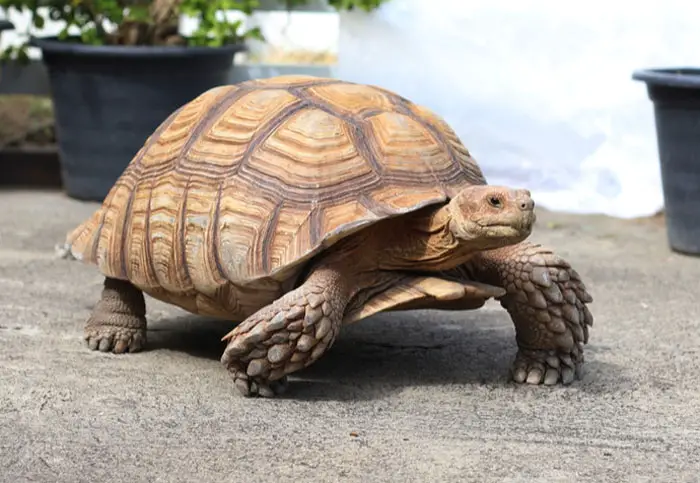
A high protein diet, in particular, affects young and growing tortoises the most. Nutritional deficiencies, such as hypovitaminosis A, have also been linked to rhamphotheca overgrowth.
- Lack of natural wear and tear: According to a study on Reptile Medicine and Surgery, lack of wear may lead to abnormal beak growth. In the wild, tortoises naturally wear away their beaks by chewing on rough surfaces. However, they may not have access to the same rough surfaces in captivity, leading to overgrown beaks.
- Health issues and genetic factors: Trauma or developmental abnormalities can cause abnormal skull and beak growth. Other health issues linked to overgrowth beaks include polyomavirus-like infection and malocclusion.
Tortoise Beak Trim Cost
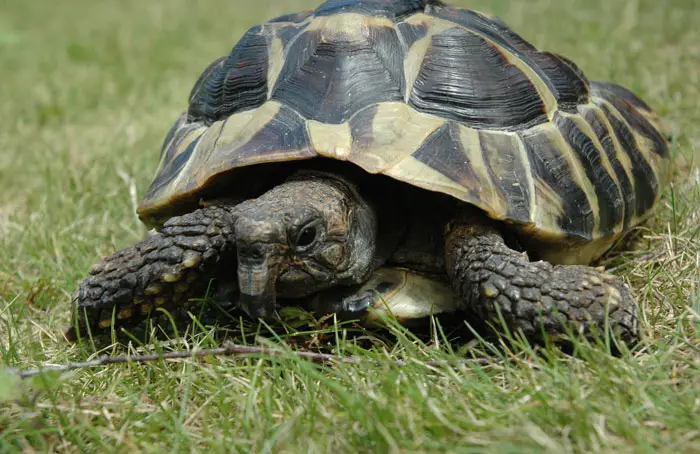
Are you uncomfortable with manual trimming or using a rotary tool? Seeking professional vet care for tortoise beak trimming is an option. A veterinarian in reptile care has the necessary tools and expertise to safely and effectively trim a tortoise’s beak.
How much you pay a tortoise beak trim vet varies. Nevertheless, you should typically be looking at $55-$65. This includes the cost of consultation, examination, and beak trimming service. You can search “Tortoise beak trimming near me” to get an exact quote.
FAQs
Here are some questions on tortoise beak trimming and aftercare.
Trimming the bottom beak of a tortoise isn’t necessary. The bottom beak will wear itself down by rubbing on the top beak.
The beak grows back after trimming. The rate of growth will be faster if you feed your tortoise on soft foods without abrasive eatables like cuttlebone to nibble on.
Provide a balanced diet rich in calcium and vitamin D3. Also, you may want to limit protein intake. A good source of calcium would be cuttlebone, which also doubles as an abrasive that wears down the tortoise’s beak.
Conclusion
Clipping and grinding are the two methods on “how to trim a tortoise beak?” However, you should exercise caution to avoid harm and disfigurement. That said, you may want to leave it to the professionals if you’re not too confident with the process.
Remember, vet checkups are crucial in maintaining a healthy beak. Your vet will detect any abnormal growth and recommend or do beak trimming. Also, don’t forget to provide your tortoise with a balanced diet with natural sources of calcium and vitamin D and hard substrates for chewing. It will ensure the good overall health of your tortoise’s beak.

